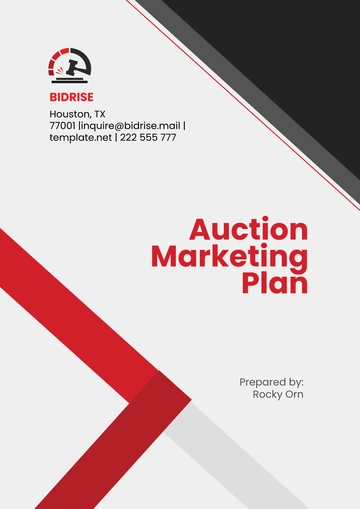Free IT Product Marketing Plan

Name | [YOUR NAME] |
|---|---|
Company Name | [YOUR COMPANY NAME] |
Department | [YOUR DEPARTMENT] |
Date | [CURRENT DATE] |
I. Executive Summary
The IT Product Marketing Plan for [PRODUCT NAME] aims to position [YOUR COMPANY NAME] at the forefront of the technology industry by introducing innovative solutions that cater to the needs of modern businesses and consumers. This executive summary provides a concise overview of the strategic approaches we will employ to promote our cutting-edge product, detailing key objectives and anticipated outcomes.
Development and execution of this marketing plan will follow a phased approach, beginning with market research and culminating in post-launch assessments. The primary goal is to achieve a significant market share and establish [PRODUCT NAME] as a leader in its category within the first year of its launch.
II. Market Analysis
Understanding the marketplace is crucial for the successful marketing of [PRODUCT NAME]. This section delves into the current market trends, customer demographics, and competitive landscape. Detailed analysis will help identify opportunities and threats within the IT industry and guide the strategic direction of the marketing efforts.
Our team will conduct both primary and secondary research. The primary research will involve surveys and focus groups with potential users, whereas secondary research will assess existing data on market behaviors and competitor analysis. Key factors being analyzed include market size, growth potential, and technology adoption rates.
III. Marketing Goals and Objectives
Objective | Description |
|---|---|
Launch Success | Successfully launch [PRODUCT NAME], effectively positioning it in the market to set the stage for future growth. |
Sales Target Achievement | Reach a sales target of [X UNITS] within the first year of launch, driving product adoption and revenue generation. |
Market Share Acquisition | Secure a [X%] market share within the target market segment, establishing [PRODUCT NAME] as a significant player in the industry. |
Brand Recognition Enhancement | Enhance brand recognition and awareness of [PRODUCT NAME] within the tech community and potential customer base. |
Quarterly Objective Segmentation | Segment goals into quarterly objectives to allow for agility and adaptation to market dynamics and changing business conditions. |
Performance Monitoring | Develop a strong monitoring system to track essential KPIs like customer acquisition costs, retention rates, and conversion rates across different marketing channels. |
IV. Marketing Strategies and Tactics
The marketing strategies for [PRODUCT NAME] will focus on digital channels given the tech-savvy nature of our target audience. Tactics will include a mix of search engine optimization (SEO), pay-per-click (PPC) advertising, content marketing, and social media campaigns. Each tactic will be designed to build on the strengths of the product and address the specific needs and preferences of the target market.
In addition to online marketing, we will employ direct outreach methods such as webinars, trade shows, and partnerships with industry influencers to build credibility and visibility. Strategic partnerships and collaborations with other tech companies will also be explored to expand our market reach.
V. Budgeting and Resources
Detailed Budget Plan: Develop a comprehensive budget plan specifically tailored for marketing [PRODUCT NAME]. Ensure alignment with forecasted financial projections and allocate resources strategically to prioritize high-impact marketing activities.
Prioritization of High-Impact Activities: Prioritize budget allocation towards marketing activities that are expected to yield the highest return on investment (ROI). This may include digital marketing campaigns, targeted advertising, and promotional events.
Regular Budget Reviews: Schedule regular reviews of the marketing budget to track spending and performance. Adjustments should be made as necessary to optimize resource allocation and ensure budget adherence.
Required Resources:
Dedicated Marketing Team: Allocate resources for a dedicated team of marketing professionals responsible for executing the marketing plan and achieving objectives.
Digital Marketing Tools: Invest in essential digital marketing tools and software platforms to facilitate campaign management, analytics, and automation.
Advertising Budget: Allocate funds for advertising expenses, including online ads, print media, and other promotional materials.
Training and Development: Budget for training programs and professional development initiatives to ensure the marketing team stays updated on the latest techniques and technologies.
Investments in Training: Recognize the importance of continuous learning and development in the field of marketing. Allocate resources for training programs and workshops aimed at enhancing the skills and knowledge of the marketing team, enabling them to stay competitive and innovative in their approach.
VI. Monitoring and Evaluation
Performance Tracking: Regularly monitor sales figures, website traffic, and engagement metrics on social media platforms to gauge the effectiveness of marketing activities.
Key Performance Indicators (KPIs): Establish and track relevant KPIs such as customer acquisition costs, conversion rates, and customer retention rates to measure the success of marketing efforts.
Feedback Collection: Implement feedback mechanisms, including customer surveys and feedback forms, to gather insights directly from customers. Analyze this data to identify areas for improvement and inform future marketing strategies.
Data Analysis: Utilize data analytics tools to analyze performance metrics and customer feedback, allowing for informed decision-making and adjustments to marketing strategies as needed.
Continuous Improvement: Use insights gathered from monitoring and evaluation processes to continuously adapt marketing strategies and product offerings to meet evolving market demands and customer preferences.
VII. Conclusion
This IT Product Marketing Plan outlines our strategic approach to position [YOUR COMPANY NAME] as an industry leader with [PRODUCT NAME]. By leveraging innovative solutions and targeted marketing strategies, we aim to achieve significant market share and brand recognition within the first year of launch. With careful monitoring and adaptation, we're confident in our ability to meet the evolving needs of our customers and drive success for [YOUR COMPANY NAME].
- 100% Customizable, free editor
- Access 1 Million+ Templates, photo’s & graphics
- Download or share as a template
- Click and replace photos, graphics, text, backgrounds
- Resize, crop, AI write & more
- Access advanced editor
Introducing the IT Product Marketing Plan Template from Template.net! Crafted with precision for tech aficionados, this editable and customizable gem is your go-to blueprint for success. Seamlessly tailor your strategy with ease, thanks to its compatibility with our Ai Editor Tool. Elevate your marketing game effortlessly!





























